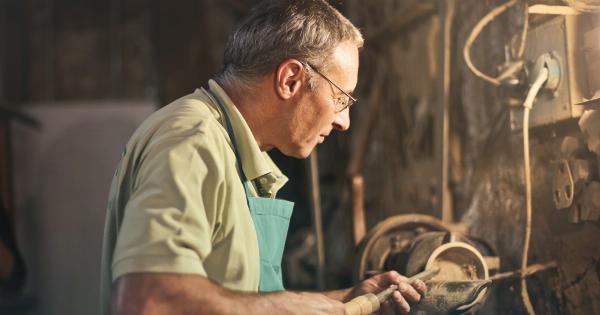Regenerative medicine is a rapidly growing field that holds immense potential for the treatment of various diseases and injuries. One of the key components of regenerative medicine is the use of stem cells.
Stem cells have the remarkable ability to self-renew and differentiate into different cell types, making them a valuable resource for tissue and organ regeneration. However, obtaining a sufficient number of stem cells for therapeutic purposes is a significant challenge. In recent years, there has been great progress in manufacturing stem cells to meet the growing demand in regenerative medicine.
Methods of Manufacturing Stem Cells
There are several methods employed in the manufacturing of stem cells for regenerative medicine. These methods can be broadly categorized into two types: embryonic stem cell (ESC) manufacturing and induced pluripotent stem cell (iPSC) manufacturing.
Embryonic Stem Cell (ESC) Manufacturing
Embryonic stem cells are derived from early embryos and have the unique ability to differentiate into any cell type in the body. The manufacturing of ESCs involves the following steps:.
1. Embryo Creation
Embryos are created through in vitro fertilization (IVF) or somatic cell nuclear transfer (SCNT) techniques. These embryos are usually surplus embryos from IVF clinics or created specifically for research purposes.
2. Isolation of Inner Cell Mass
After the embryos reach the blastocyst stage, the inner cell mass (ICM) is isolated. The ICM contains the pluripotent stem cells that will be used for manufacturing ESCs.
3. Culture and Expansion
The isolated ICM cells are cultured in a laboratory dish with specific culture media, which provides the necessary nutrients and growth factors for their proliferation.
These cells are subjected to strict quality control measures to ensure their purity and pluripotency.
4. Differentiation
The cultured ESCs can be differentiated into specific cell types by exposing them to specific growth factors and culture conditions.
This differentiation process mimics the natural cues that occur during embryonic development, resulting in the desired cell type.
Induced Pluripotent Stem Cell (iPSC) Manufacturing
iPSCs are another type of stem cells that can be generated from adult cells, such as skin cells or blood cells. The manufacturing of iPSCs involves the following steps:.
1. Cell Reprogramming
Adult cells are reprogrammed to become iPSCs through the introduction of specific transcription factors. These factors induce a pluripotent state in the cells, similar to that of embryonic stem cells.
2. Culture and Expansion
The reprogrammed iPSCs are cultured and expanded in the laboratory using similar methods as for ESCs. The cells undergo rigorous quality control tests to ensure their pluripotency and genetic stability.
3. Differentiation
Like ESCs, iPSCs can be differentiated into various cell types by exposing them to specific growth factors and culture conditions. This allows for the generation of patient-specific cells that can be used for personalized regenerative medicine.
Challenges in Manufacturing Stem Cells
Despite the progress in manufacturing stem cells, there are still several challenges that need to be overcome:.
1. Scaling up Production
The demand for stem cells in regenerative medicine is increasing rapidly. It is essential to develop scalable manufacturing methods that can produce large quantities of high-quality stem cells to meet this demand.
2. Cost-effectiveness
The manufacturing process of stem cells can be expensive, mainly due to the use of specialized culture media and growth factors. Finding cost-effective alternatives without compromising the quality and safety of the cells is crucial.
3. Standardization and Quality Control
Standardization of manufacturing methods and quality control measures is essential to ensure the consistency and safety of stem cell products. This includes establishing guidelines for cell characterization, purity, and genetic stability.
Applications of Manufactured Stem Cells
The manufacturing of stem cells has opened up a multitude of possibilities for their application in regenerative medicine:.
1. Tissue Engineering
Manufactured stem cells can be used in tissue engineering approaches to create functional tissues or organs.
By guiding their differentiation into specific cell types, it is possible to generate tailored tissues for transplantation, such as heart muscle or pancreatic islet cells.
2. Drug Development and Screening
Stem cells can be used to develop disease models for drug screening and testing.
Patient-specific iPSCs can be differentiated into disease-relevant cell types, providing a platform for studying the underlying mechanisms of the disease and identifying potential therapeutic targets.
3. Cell-Based Therapies
Manufactured stem cells can be utilized in cell-based therapies for various conditions, including neurodegenerative disorders, cardiovascular diseases, and spinal cord injuries.
These therapies aim to replace damaged or dysfunctional cells with healthy, functional cells derived from stem cells.
Ethical Considerations
The manufacturing of stem cells, particularly ESCs, raises ethical concerns due to the destruction of embryos.
However, advances in iPSC technology have provided a potential solution to this ethical dilemma, as iPSCs can be derived from adult cells instead of embryos.
Conclusion
The manufacturing of stem cells for regenerative medicine is a complex and evolving field. The development of scalable, cost-effective methods for producing high-quality stem cells is crucial to meet the growing demand.
Despite the challenges, the potential applications of manufactured stem cells in tissue engineering, drug development, and cell-based therapies offer great hope for the future of regenerative medicine.





























